The Weekend Recap: Records Galore and Age Defying Performances
The Weekend Recap: Records Galore and Age Defying Performances
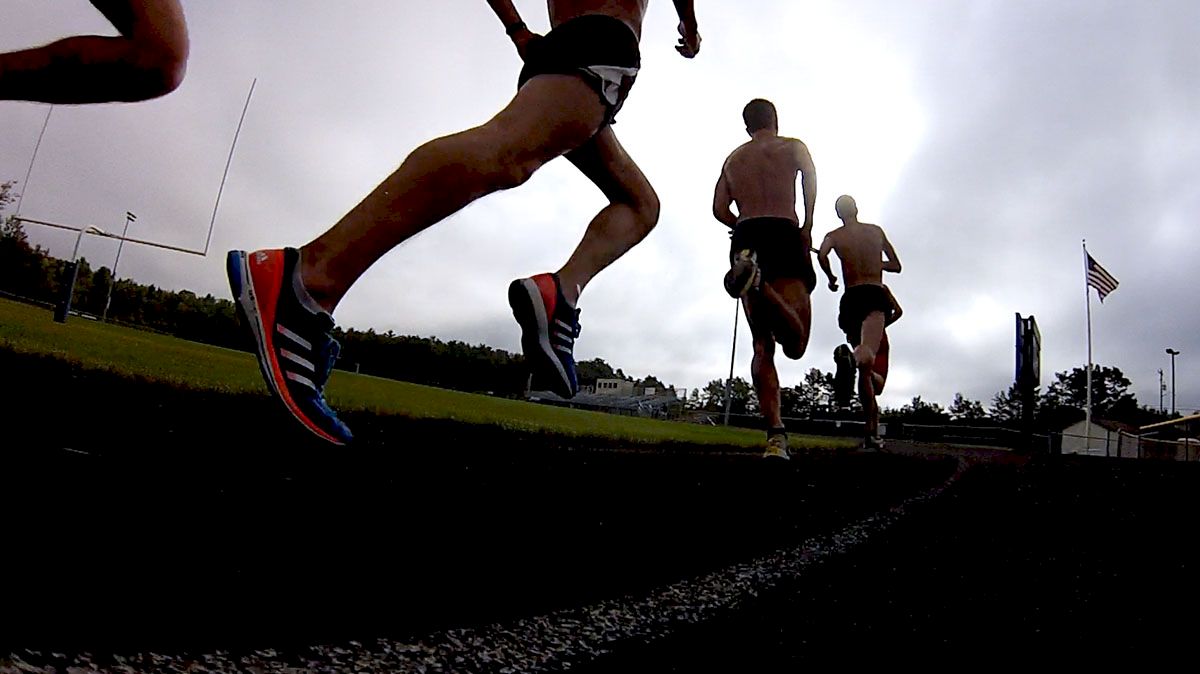
If perspective is everything, then we’re about to walk into an M.C. Escher drawing.
In this recap, we’ll analyze some big records, ask if age is just a number, try to find the all-time slowest first half of a race, and holy cow is that Taoufik Makhloufi?!
Edit: This was originally supposed to include NCAA craziness, but we decided to hold off on that for now. We’ll have something later today.
Lopez Lomong is Right on Pace
Lomong’s American indoor 5000m record wasn’t too surprising. Well, that’s not totally correct. We were amazed by his run at the Armory, but even more taken aback when we looked back at the data.
We’ve discovered that trying to use original equations (Enowitz Calculator, FloRatings) is basically a crapshoot. Even when pundits try and use seasonal progressions as indicators, nothing is ever perfect. Add the fact that we had very little data to predict Lomong’s time and the outcome was pretty funny.
So far, Lomong’s short indoor season is almost an exact replica of Lagat’s campaign from last year. The two had both run 3:36.x for 1500m (Lomong’s was en route) and 13:07.x for 5000m.
We’ll chalk it up to luck, but it doesn’t hurt to continue to look at what Lomong could be capable of doing in the next few months.
Following his 5000m American record last year, Lagat went on to win the indoor 3000m at World Champs and then take fourth in the Olympic 5000m final.
Could Lomong accomplish the same feats? No and maybe.
Based on his blog, we’re fairly sure that Lomong isn’t going to continue to run indoors. Bummer.
The second is that Lagat is one of the most fearsome kickers in the game and even though Lomong has the speed (1:46 earlier this season), the two ran their American records very differently.
For their last 400m, Lagat closed in a smooth 58-second while Lomong toughed out a 62-second split.
Again, the two are very different runners. A more 5000m savvy Lomong could be in the hunt for a medal in Moscow (if he makes the team). Don’t discount Lomong this summer and don’t base your predictions entirely on data. We’ve tried (and failed).
Jenn Suhr Sets the World Record, Ruins the Curve
At the U.S. Indoor Championships, Jenn Suhr was perfect. The Olympic gold medalist came in at 15-3 (4.65m) and was had no misses through her world record vault of 16-5.5 (5.02m).
She then attempted to clear the highest outdoor vault of 16-7.5 (5.07m), but failed three times. Nevertheless, the indoor world record now belonged to Suhr.
When it comes to the pole vault, we’re more accustomed to Yelena Isinbayeva’s incremental world record marks. The “Queen of the Vault” has set the last nineteen outdoor world record marks and owns fourteen of the top twenty final marks indoors.
| Result | P.A. | Pos. | Athlete | Birth | Cnt. | Type | Pl. | Venue | Date | R.S. | Rec. |
|---|---|---|---|---|---|---|---|---|---|---|---|
| 5.02 | 1. | 1. | Jennifer SUHR | 82 | USA | F | 1. | Albuquerque (USA) | 02.03.2013 | 1261 | WR, AR |
| 5.01 | 2. | 2. | Yelena ISINBAYEVA | 82 | RUS | F | 1. | Stockholm (SWE) | 23.02.2012 | 1258 | AR |
| 5.00 | - | 3. | Yelena ISINBAYEVA | 82 | RUS | F | 1. | Donetsk (UKR) | 15.02.2009 | 1255 |
|
| 4.95 | - | 4. | Yelena ISINBAYEVA | 82 | RUS | F | 1. | Donetsk (UKR) | 16.02.2008 | 1239 |
|
| 4.93 | - | 5. | Yelena ISINBAYEVA | 82 | RUS | F | 1. | Donetsk (UKR) | 10.02.2007 | 1233 |
|
| 4.91 | - | 6. | Yelena ISINBAYEVA | 82 | RUS | F | 1. | Donetsk (UKR) | 12.02.2006 | 1227 |
|
| 4.90 | - | 7. | Yelena ISINBAYEVA | 82 | RUS | F | 1. | Madrid (ESP) | 06.03.2005 | 1223 |
|
| 4.90 | - | 7. | Yelena ISINBAYEVA | 82 | RUS | F | 1. | Praha (CZE) | 26.02.2009 | 1223 |
|
| 4.89 | - | 9. | Yelena ISINBAYEVA | 82 | RUS | F | 1. | Liévin (FRA) | 26.02.2005 | 1220 |
|
| 4.88 | - | 10. | Yelena ISINBAYEVA | 82 | RUS | F | 1. | Birmingham (GBR) | 18.02.2005 | 1217 |
|
| 4.88 | - | 10. | Jennifer SUHR | 82 | USA | F | 1. | Boston (USA) | 04.02.2012 | 1217 |
|
| 4.87 | - | 12. | Yelena ISINBAYEVA | 82 | RUS | F | 1. | Donetsk (UKR) | 12.02.2005 | 1214 |
|
| 4.87 | 3. | 12. | Holly BLEASDALE | 91 | GBR | F1 | 1. | Villeurbanne (FRA) | 20.01.2012 | 1214 |
|
| 4.86 | - | 14. | Yelena ISINBAYEVA | 82 | RUS | F | 1. | Budapest (HUN) | 06.03.2004 | 1211 |
|
| 4.86 | - | 14. | Jennifer SUHR | 82 | USA | F | 1. | Albuquerque (USA) | 27.02.2011 | 1211 |
|
| 4.85 | 4. | 16. | Svetlana FEOFANOVA | 80 | RUS | F | 1. | Peania (GRE) | 22.02.2004 | 1208 |
|
| 4.85 | - | 16. | Yelena ISINBAYEVA | 82 | RUS | F | 1. | Moskva (RUS) | 07.02.2010 | 1208 |
|
| 4.85 | - | 16. | Yelena ISINBAYEVA | 82 | RUS | F | 1. | Donetsk (UKR) | 06.03.2010 | 1208 |
|
| 4.85 | - | 16. | Yelena ISINBAYEVA | 82 | RUS | F | 1. | Donetsk (UKR) | 12.02.2011 | 1208 |
|
| 4.85 | 4. | 16. | Anna ROGOWSKA | 81 | POL | F | 1. | Paris (FRA) | 06.03.2011 |
1208 |
Suhr has been incremental in her development as well. In the last three years, she’s set a personal best indoors for the vault (no mark in 2010).
2009 - 4.83m
2011 - 4.86m
2012 - 4.88m
2013 - 5.02m
The difference is that Suhr completely skipped over the 4.9x height and right into the five meter range. Even when she set a personal best last month in Boston, it was still 4.88m. How’d she make the jump?
"I was in a groove tonight," Suhr told reporters. You can say that.
This is also troubling for Isinbayeva. Not only has she not competed this indoor season, but she was denied a third consecutive Olympic gold medal this summer and had to settle for bronze.
The "Queen" may be on the decline and it comes at a very inopportune time. This summer’s World Championships will be in Moscow and the home crowd will surely be looking for Isinbayeva to return to her world record form.
Not if Suhr has anything to say about that.
Chris Derrick and the Time Machine
Have you ever complained about your age group? “If I was born one year earlier, I would have been all-conference / all-state / all-American / etc.”
If Chris Derrick had been around four years ago, he’d be at the very top of distance running in the U.S. While he’s among the upper, upper echelon right now, let's not compare him to the present, but look at what other athletes his age (22) have done.
Say, Galen Rupp.
While most of the chatter at the Armory was about Lomong’s run, Derrick put together an incredible race to take second in 13:12.00. That’s two straight years of running the 5000m at the Armory and two years of huge personal bests, indoor or out.
How do Derrick’s marks from this year compare to Rupp’s from 2009? If we go back to using data points as indicators for the future, then the future is very bright for Derrick (then again, you didn’t need any data to verify this claim).
Chris Derrick
| Event | Time |
| 1500m | 3:41.17 |
| 3000m | 7:46.81 |
| 5000m (indoors) | 13:12.00 |
| 10000m | 27:31.38 |
Galen Rupp
| Event | Time |
| 1500m | 3:39.14 |
| 3000m | 7:44.69 |
| 5000m (indoors) | 13:18.12 AR |
| 10000m | 27:37.99 |
Considering that Derrick is a bit young for his age-group (his birthday is 10/17/90) and that Rupp was twenty-three when he ran some of those times, we’ll just say that the future looks bright for the Stanford graduate.
Could he be a world-class 10000m athlete in a few years? We’ll have to wait until Rio (or sooner?).
Jeremy Wariner Isn’t Old
Speaking of age, there was a lot of chatter about the winner of the men’s 400m at the U.S. Indoor Championships as Jeremy Wariner ran 45.82 to return to his winning ways.
One Twitter user replied to one of Flotrack’s tweets referring to Wariner as “old.” No, not his form, but his age.
Old? He’s been around for a while, but that doesn’t make him old. At age 29, Wariner still has a lot of speed in him. The question is how much is left?
Older sprinters such as Doc Patton (35) and Kim Collins (36) still have explosive power, but it’s not world record speed. Wariner may be winning, but will the world record talk ever return?
In 2007, it looked like Wariner would be the one to ascend to the top of the 400m throne. He had just run 43.45 at the World Championships, which put him #5 all-time (3rd-fastest individual). Only Harry Reynolds (43.29) and Johnson’s world record (43.18) stood before him.
Then, there were some coaching changes, training snafus, and a loss of form. Six long years later, Wariner looks like he’s making a second rise to greatness, but is it too late?
Definitely not.
| Rank | Time | Name | Birthday | Date of Race |
| 1 | 43.18 | Michael Johnson | 09/13/64 | 08/26/99 |
| 2 | 43.29 | Harry Reynolds | 06/08/64 | 08/17/88 |
| 3 | 43.39 | Michael Johnson | 09/13/64 | 08/09/95 |
| 4 | 43.44 | Michael Johnson | 09/13/64 | 06/19/96 |
| 5 | 43.45 | Jeremy Wariner | 01/31/84 | 08/31/07 |
Let’s take a look at the top four marks for both Reynolds and Johnson. While Reynolds ran his fastest time at age 24, his second-fastest time (43.91) came when he was 32.
Although three of Johnson’s best times came he was 27 - 28, his world record was set when he was almost 32-years-old.
If anything, Wariner is primed for a big return. Watch out for the shades.
Also, is this the most detailed Wikipedia page for a track and field athlete’s credentials? It’s incredible.
Mary Cain and Ajee Wilson - Teen Girl Squad and the Slowest Race Ever?
Teen sensations Mary Cain and Ajee Wilson both took home their first senior national titles at the U.S. Indoor Championships. The two, however, both ran very different races.
To be a bit more precise, exact opposites.
We’ll start with Wilson mainly because when these two are grouped together, Cain usually gets the main card. I personally feel like not enough people are talking about Wilson, but I digress. Back to the race.
In the 800m, Wilson lead from the gun to win in 2:02.64, which was a step ahead of the charging Chanelle Price (2:02.93).
Wilson, who decided to not attend Florida State University this year and sign with adidas, has been having quite the indoor season. In the 600m, she’s eclipsed the previous World Junior mark of 1:27.4 twice (1:27.30 and 1:26.45) and now set a personal best in the 800m.
Confident in her abilities, Wilson didn’t shy away from the more seasoned competition in Albuquerque, NM. In the women’s mile, Cain didn’t either.
In a tactical race (I prefer pedrestrian, but both will do), Cain went to the front, but literally jogged in lane two expecting someone else to take the pace.
That didn’t happen for 809m.
Opening splits of 85.26 (409m) and 2:56.74 (809m) meant that like always, it was going to come down to a kick.
Cain put on a clinic like she had been doing this for years and destroyed the field over the last 600m. Successive 200m splits of 32.53, 29.27, and 29.34 put her to front and although she was occasionally challenges, she fended off any and all surges for the lead.
Her winning time of 5:05.68 is a display of what she and her coaches have said in every post-race interview: She’s not running for records, but to win.
With no rabbit or records in mind, Cain finally concentrated on racing and took home a big victory over the professionals.
The two immediate takeaways were Wilson and Cain’s age and the last 600m of the mile.
At 16 (Cain) and 18 (Wilson), these senior wins are huge stepping stones for the two going forward.
We first thought, “Gosh, they’re young. Who else has won senior titles at such young ages?”
The two are young, but they’re not the youngest. Joy Foster, a Jamaican table tennis player, took home her first senior title at only 8 years old. If you want to read more about a few young guns who have stepped up to the senior levels, here’s the Wikipedia link.
The second and more track-orientated question was, “Jeez. What are some other races that have closed super fast?”
The best example may be from the men’s 2001 Goodwill Games 5000m final. All seven finishers have broken the 13:00 barrier, but well, the results speak for themselves. If anyone has the splits or maybe a race video, we’d be eternally indebted to you.
Another solid example would be the men’s 2004 Olympic 1500m final. Hicham El Guerrouj finally won that elusive gold medal, but it’s the manner in which he did it that still remains unfathomable.
Splits (via Track and Field News)
400m: Isaac Kiprono Songok KEN 1:00.42
800m: Hicham El Guerrouj MAR 2:01.93(61.51)
1200m: Hicham El Guerrouj MAR 2:55.21(53.28)
1500m: Hicham El Guerrouj MAR 3:34.18(38.97)
Unofficial Final 400m Split: 51.91
Unofficial Final 800m Split: 1:46.8
Unofficial Final 800m 100m Splits: 14.4, 13.8, 13.4, 13.3, 12.9, 12.9, 12.7, 13.5
That’s one way to prove that you’re the King of the Mile. But speaking of Olympic 1500m gold medalists...
Where in the World is Taoufik Makhloufi?
We never saw much of the Olympic champion before his gold medal run and following the London Games, he’s once again disappeared.
Where is he? When’s he going to race? Will we ever see him again?
We’re not sure on those three, but we do know that he’s training with someone we’ve seen a lot of this indoor season - Djibouti’s Ayanleh Souleiman.
Souleiman had run 1500m in Dusseldorf (first - 3:36.13) and a 3000m in Ghent (third - 7:39.81), but it wasn’t until his 1000m win in Stockholm that evoked genuine surprise.
Actually, it wasn’t until a few days ago that we even knew what we were looking for in the video.
Under the video, one user wrote, “He totally hugs Makloufi (sp) after his race.”
Wait, what?
So we went back, watched it until the finish, and holy **** that’s him.
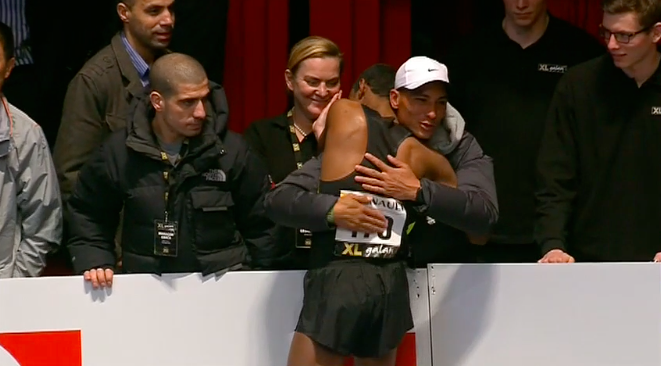
Just as we have no idea when he’ll remerge, we have no idea about the future of any of the names listed above.
The best we can do right now is put some perspective on their marks and hope that these positive historical trends continue. Check back for a quick recap of some of the NCAA action from the weekend and previews for the upcoming NCAA championships.
Related Content
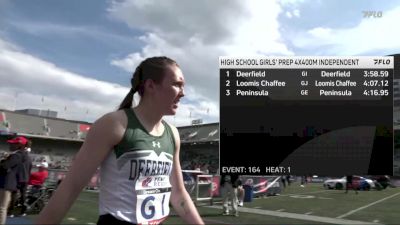 Replay: Penn Relays presented by Toyota | Apr 25 @ 9 AM
Replay: Penn Relays presented by Toyota | Apr 25 @ 9 AMApr 26, 2024
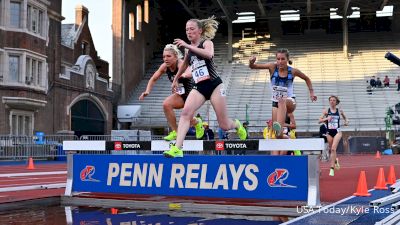 Penn Relays 2024 Schedule Day 2: Here Are Today's Events
Penn Relays 2024 Schedule Day 2: Here Are Today's EventsApr 26, 2024
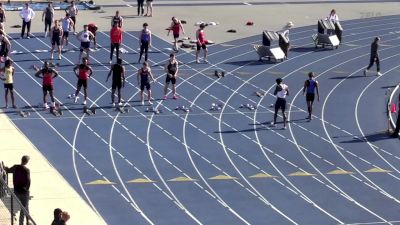 Replay: GVSU Extra Weekend | Apr 25 @ 12 PM
Replay: GVSU Extra Weekend | Apr 25 @ 12 PMApr 26, 2024
 How to Watch: 2025 Ascension Seton Austin Marathon and Half Marathon | Track and Field
How to Watch: 2025 Ascension Seton Austin Marathon and Half Marathon | Track and FieldApr 26, 2024
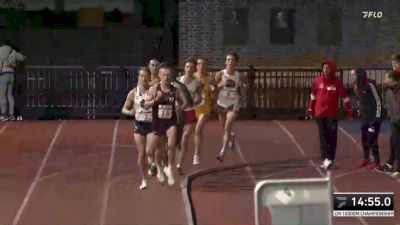 Men's 10k Event 210 - Championship, Finals 1
Men's 10k Event 210 - Championship, Finals 1Apr 26, 2024
 Penn Relays 2024 Results On Day 1: See Which NCAA Stars Won
Penn Relays 2024 Results On Day 1: See Which NCAA Stars WonApr 26, 2024
 Women's 10k Event 209 - Championship, Finals 1
Women's 10k Event 209 - Championship, Finals 1Apr 26, 2024
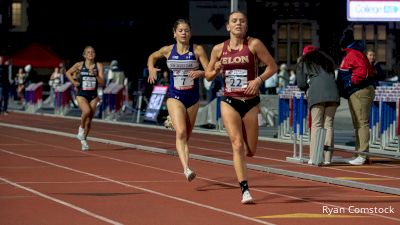 Jette Beermann Pushes To Win Women's 5000M Competition At Penn Relays
Jette Beermann Pushes To Win Women's 5000M Competition At Penn RelaysApr 26, 2024
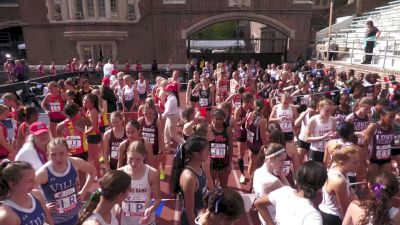 Replay: Paddock - 2024 Penn Relays presented by Toyota | Apr 25 @ 1 PM
Replay: Paddock - 2024 Penn Relays presented by Toyota | Apr 25 @ 1 PMApr 26, 2024